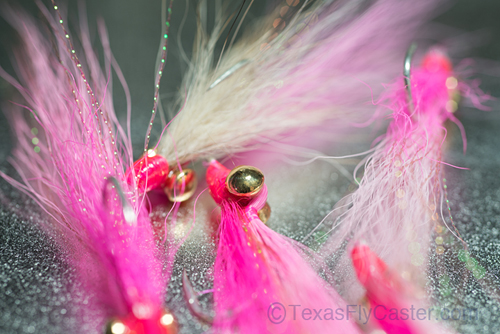
All Clousers Are Not Alike!
Here’s a video that dissects the big box abomination that THEY call a Clouser Minnow pattern. Please watch and comment!
VIDEO TRANSCRIPT:
Today we are looking at what makes a bad Clouser Minnow and what makes a good Clouser Minnow fly.
The Clouser is a standard for those of us who find ourselves fly fishing in Southern US warm waters, and those of us who fly fish in salt water. The Clouser is perhaps the greatest fly ever created for warm freshwater fly fishing. Yes, we all have one – an opinion that is – and unlike Orvis’ Tom Rosenbauer – I am certainly willing to hear your opinion on the “Best Warm Water Fly” ever. PoPs has tied the Clouser by the thousands and sold them by the dozens – I am mostly greedy with them!
My motivation for taking on this topic was a recent ad that ran in the Cabela’s flier that came out in March. I looked at it once, and knew – KNEW – I had to say something. Their version of a Clouser, is a true abomination of the formula made famous by Bob Clouser.
First take a look at where the thread ends on the head of the fly. It starts in the correct place but it ends well before it runs back to the eyes. That does two things. 1) it leaves that hair in front of the eyes exposed to teeth. 2) It changes the profile of the fly. 3) By not building up a thread head, it also changes the weight distribution of the fly.
Second, take a look at the eyes! The eyes in the photograph are way too small to turn that unknown hook over. And the thread wraps are not snugged around the belly (top) hair before going back behind the eyes to secure that white ducktail down. In fact, that thread too, seems to stop ways short of the eyes.
Third, and this is a huge mistake. Take a look at the way the belly (white bucktail) is roped down way back on the shank of the hook. That is absolutely 100-percent wrong. Why? 1) Because it changes the profile of the fly (a representational fly) and makes it much smaller in appearance. 2) It also critically changes the action of the fly, greatly reducing the fly movement in the water. Think of the fly as a worm. Do you take a six-inch plastic worm and put a five inch worm hook through it? Hell no.
Fourth, the top body of the fly (chartreuse) is way too long. That does two things. 1) Although less critical, it distorts the profile of the fly. 2) Depending on the density of the hair and where it came from, it can also cause the fly to run sideways or upside down.
Will you catch fish on a Cabela’s Clouser? Absolutely. The Clouser fly is that good! Will this fly catch as many fish as a PoPs Clouser? No. As you can see, a PoPs Clouser will last much longer than a big box Clouser – just by the construction. And “no” because the PoPs Clouser is properly balanced and tied to run hook-up and to have more movement even when not being retrieved (on your pause).
The PoPs Clouser is tied on reputable hooks, depending on what PURPOSE they are intended for. Circle jig hooks for freshwater, and stainless steel saltwater circle hooks are two examples you never find in a big-box Clouser, but you can find at PoPs. Thread use is 210-flat waxed or unwaxed typically. Head is coated with Loon UV – generously – and hardened to the extreme with UV light and sun exposure in open air to mitigate any potential odors. And, when it comes to flies for freshwater fish, like sand bass, hybrid and striper? PoPs uses synthetic to aid in rapid sink and durability. Eyes are sold by www.allenflyfishing.com and PoPs uses brass for saltwater and chrome for freshwater. Saltwater Clousers are also highlighted with gold flash unless specified otherwise.
My opinion is that the Clouser Minnow has slowly morphed into a different design for a couple of reasons. First, these are tied overseas. And the people who learned to tie wrong, teach how to tie a Clouser wrong. Second, people here in North America tend to copy what they see without going back to the origins – Bob Clouser’s text on the Clouser Minnow.
